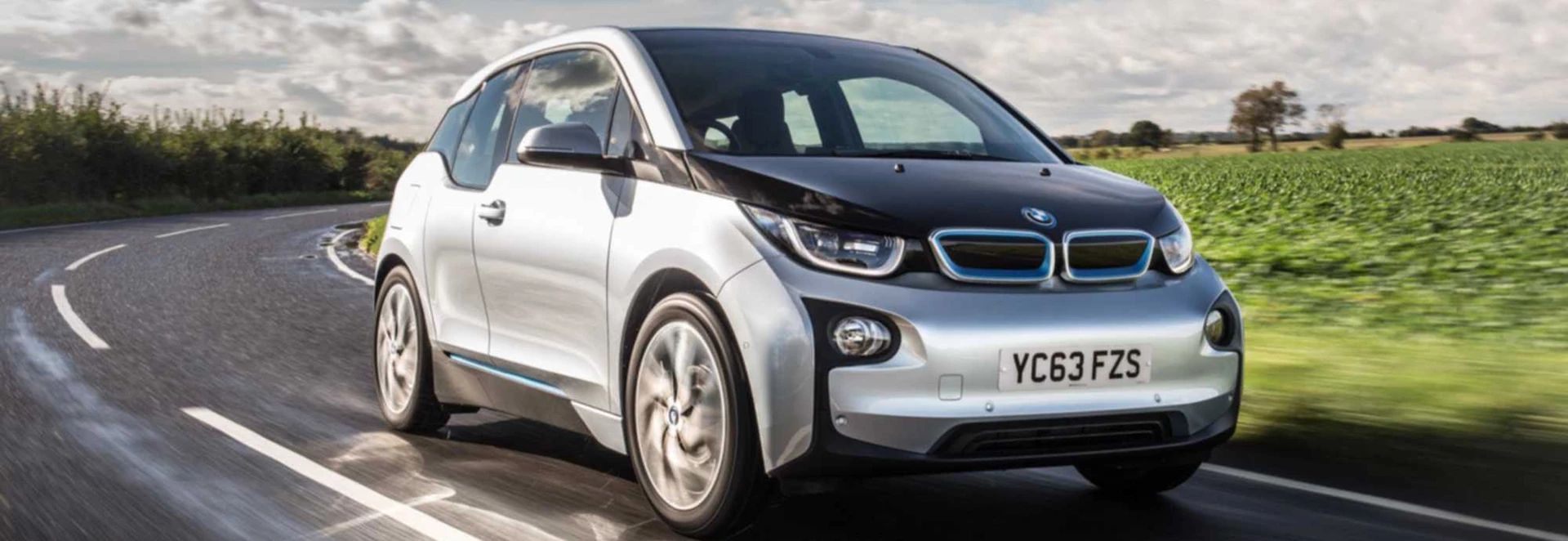The hype around BMW’s electric i3 supermini has been building for a while, and since the official launch in January this year, its success has been quickly cemented, already winning UK Car of the Year 2014.
Two versions are available: a pure electric model and a range extender, with the latter expected to make up the majority of sales for the foreseeable future, thanks to its additional range courtesy of a small petrol motorcycle engine.
With the government’s £5,000 grant include, the standard i3 costs £25,680 while the i3 Range Extender costs £28,830 – still a sizeable purchase for a vehicle that will struggle to get you from one end of the country to the other.
Performance
We tested the i3 Range Extender which achieves 0-62mph in 7.9 seconds (compared to 7.2 seconds for the pure electric iteration) from 170bhp.
Range is up to 180 miles, reckons BMW. In real life, and from our limited experience, this is notably less, and is affected by many factors including driving style and climate control use.
And the 650cc two-cylinder petrol engine has a fuel tank of just nine litres which won’t get you very far at all once the electric charge expires. By launching the Range Extender model, BMW has tried to quell people’s range anxiety, but you will need to refill the tank quite often.
Three driving modes are offered in the i3: Comfort will eat away at charge the quickest, while Eco Pro Plus is the most efficient, limiting speed to 56mph and turning off climate control.
Ride and Handling
BMW’s well-known rear-wheel drive layout remains in the i3, which helps to achieve nicely weighted and responsive steering, while a tight turning circle makes for an agile drive in town locations.
BMW has built this car from the ground up, with an entirely new platform, largely composing carbon-fibre reinforced plastic. This not only helps push the brand’s sustainability message, but crucially it also keeps weight down. Factor in the car’s low centre of gravity, thanks to the lithium-ion battery pack’s position under the car’s floor, and you have a decent handling machine on your hands. BMW’s well-known rear-wheel drive layout remains in the i3, which helps to achieve nicely weighted and responsive steering, while a tight turning circle makes for an agile drive in town locations. Despite impressive tuning, narrow tyres mean grip is limited, and the ride is firm over bumps. Electric vehicles are intrinsically quiet, which means refinement is superb here. Even when the petrol engine kicks in, noise is kept to a minimum. Our only complaint on the refinement front was wind noise coming off the A-pillar at higher speeds.
Interior and Equipment
The BMW i3 is built around a carbon fibre chassis more commonly used to build racing cars and supercars like the McLaren P1, thanks to its light weight and huge strength.
The cabin adds to the space-age effect, with hi-tech design and plenty of sustainable materials. A screen behind the wheel shows what range is left for both electric and petrol motors, and if the i3 is charging, will display the time at which it will be back to full charge. A second screen in the centre of the dashboard hosts infotainment and everything else, including satnav which tells you where public charging points are within a 100-mile radius. Through BMW’s brilliant iControl dial, you can also choose to switch to petrol mode, conserving electric charge for more suitable driving scenarios. The layout of the cabin gives the impression of plenty of space, too. The coach doors make access incredibly easy – achieved by the removal of the B-pillar – and there’s a continuous footwell in the front, due to the absence of a transmission tunnel. There’s only two seats in the back though, while the boot is a decent 300 litres, but overall, the i3 is lacking the practicality of a conventional family hatchback. Standard equipment includes Bluetooth, DAB digital radio, rear parking sensors, automatic rain sensors and 19-inch alloys. Options on our test car included an electric glass sunroof (£780) and the Park Assist Package including reversing camera, and front and rear parking sensors (£790).
Cost
Most owners will charge the i3 overnight with an eight-hour charge on a standard household socket costing less than a fiver on current energy rates.
The i3 Range Extender emits 13g/CO2, which means zero road tax and London Congestion Charge exemption. It’s also business-friendly, with 100 per cent capital write-down allowance and low National Insurance and Benefit-in-Kind brackets. Most owners will charge the i3 overnight with an eight-hour charge on a standard household socket costing less than a fiver on current energy rates. Or there’s AC Fast Charging which will power the car within three hours, and is found where public charging points are located, or through a BMW I Wallbox, that you can pay to have fitted at home. While on-the-road, BMW offer a ChargeNow card in partnership with ChargeMaster which costs £20 a year, and then has pay-as-you-go access, with customers receiving an itemised monthly statement. Meanwhile, the petrol tank costs around £10 to fill up, which gives you a claimed 70 miles of range, though likely to be less.
Our Verdict
The i3 is a fun car to drive around the city and attracts plenty of attention too. In fact, it’s such a distinctive-looking car, you’ll find plenty of people snapping pictures as they pass by. Driving dynamics are respectable too, but its cost, along with charging-point access remain obstacles. During our test period around Liverpool, there was a severe shortage of public charging points, meaning we were regularly running the car on petrol. The i3 remains hard to justify for most, but has undoubtedly helped the electric-car quest turn a corner, considerably raising their profile for both BMW and electric motoring in general.




